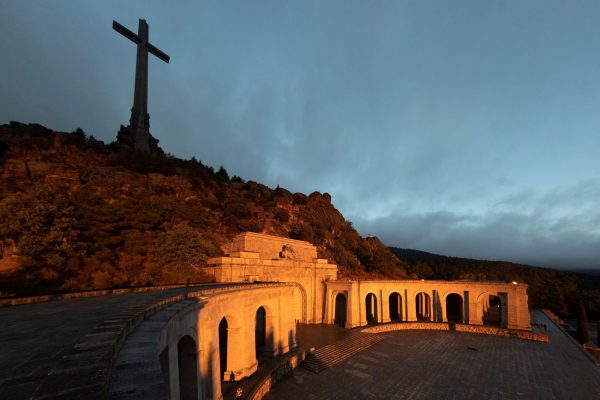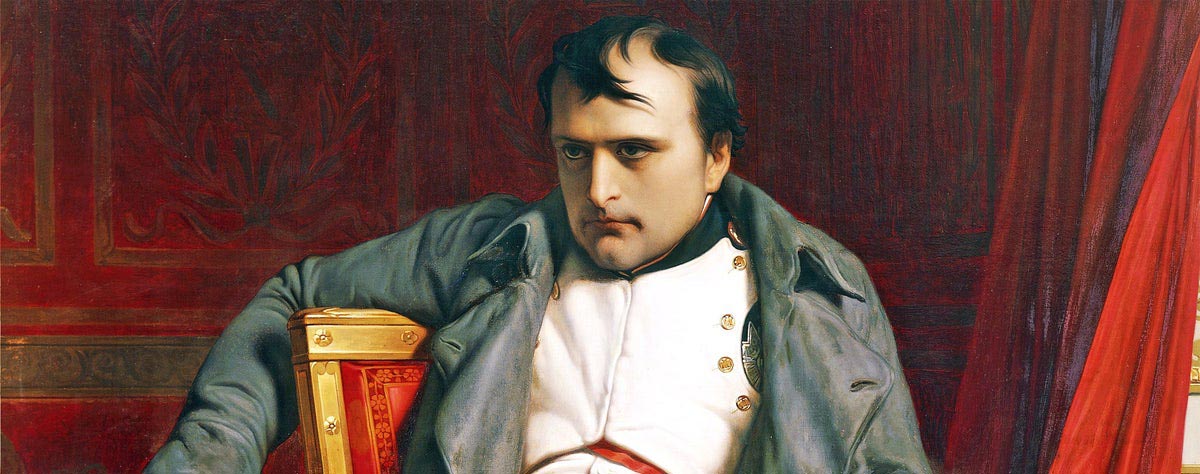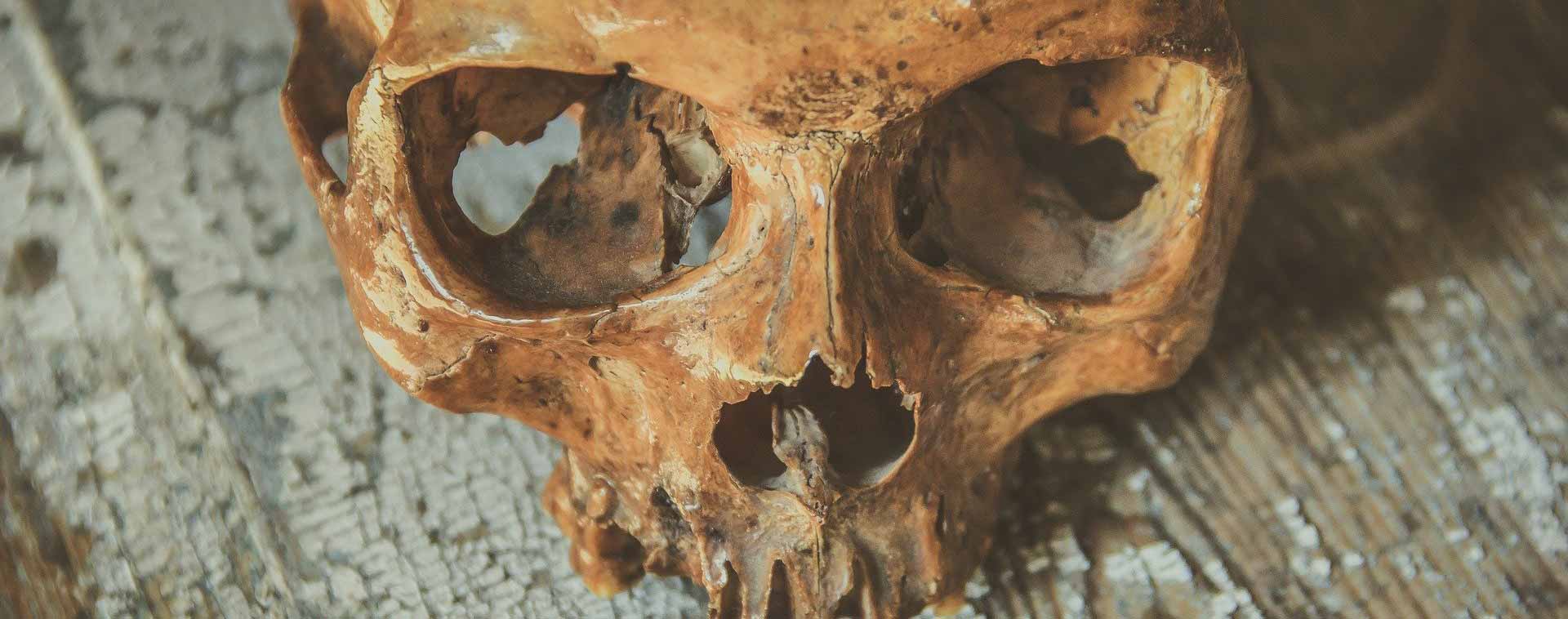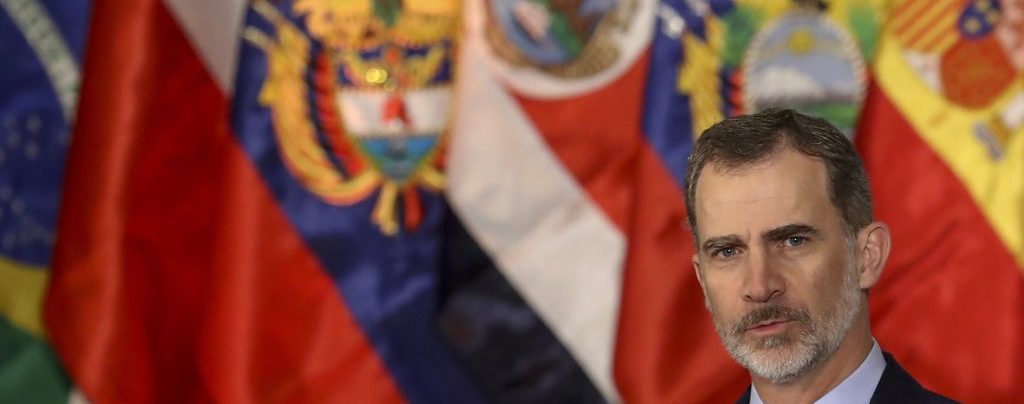1.- Background to the draft bill on “Democratic Memory”
During the controversy over the transfer of Franco’s remains from the basilica of the Valley of the Fallen to the cemetery of Mingorrubio, which culminated on 24 October 2019, the Spanish Socialist Workers’ Party dusted off its desire to approve an aggravated version of the 2007 “Historic Memory” Law1. With this bill, a text of which had already been circulated two years earlier and which aroused much controversy2, it sought to reinforce its own political identity, increasingly diluted by the competition posed by Podemos and Ciudadanos on the flanks of its traditional electoral space. The 2007 law had been based on a prefabricated demand by memorialist associations linked to Izquierda Unida, the PSOE itself and its main trade unions, for public recognition of the “truth” of the events of the Civil War and Francoism.
On 24 October 2019 the PSOE dusted off its desire to pass an aggravated version of the 2007 Law of “Democratic Memory”
The demand was unfounded, since historical knowledge of what happened between 1936 and 1975 was, at the beginning of the 21st century, very complete and detailed, at least if compared with any other period of Spanish history, before or after. This was attested to by the huge number of titles especially focused on the study of the Civil War and the reprisals carried out by both sides. These reprisals had been prolonged by the winning side beyond 1 April 1939, although strictly speaking they could not be called “post-war” those carried out in the months immediately after the end of the conflict. It should not be forgotten that the Republican side collapsed in March 1939, which meant that almost a third of Spain and a defeated army of some 700,000 soldiers fell into the hands of their adversaries at a stroke. On the other hand, the end of the Civil War did not completely put an end to the violence. The clashes continued with the emergence of rural guerrillas (the maquis) and urban guerrillas, closely linked to the communist and anarcho-syndicalist organisations, which operated in the 1940s and 1950s. Finally, between the late 1960s and early 1970s, a phenomenon of extreme left-wing terrorism emerged that was no longer linked to the Civil War but was part of the wave of violence that swept Western Europe from 1968 onwards.
No higher institution within the state should be able to say: you do not have the right to seek for yourself the truth of the facts, those who do not accept the official version of the past will be punished. It is something substantial to the very definition of life in democracy: individuals and groups have the right to know, and therefore to know and make known their own history. It is not for the state to prohibit or permit them to do so.
Tzvetan Todorov, The Abuses of Memory, p. 14.
It was precisely in the late Francoist years that valuable and voluminous studies on the Republic and the Civil War appeared. However, it was with the democratic monarchy that historians were completely free to research, publish and discuss. There were still certain restrictions on the consultation of official documentary collections, whose declassification depended on the passage of time or on the selection made for reasons of State security. However, these difficulties were being ironed out and, in any case, it would have been sufficient to modify the specific regulations governing archives to facilitate access to them, without the need to legislate on “memories”. The same was true of the other great banner used by the PSOE to justify its support for “memorialism”: the need to provide a favourable legal framework and public resources to locate and identify the bodies of the “victims” of the Civil War and Franco’s dictatorship, which the political and trade union left agree in identifying only with those retaliated against by the Nationalist side3. The others, the “memorialists” claim, have already been repaired by Francoism. They would even be second-class victims, insofar as the violence that eliminated them, that of a legitimate regime that defended itself and was left with no means of stopping the “uncontrolled” members of its own militias, could not be equated with the violence systematically exercised by military coup plotters and their accomplices. Of course, this statement is a pretext to dilute the memory of the violence of the Republican side, while at the same time fixing in the memory of Spaniards the violence of the Nationalist side.
It was with the democratic monarchy that historians’ freedom to research, publish and discuss was total
The Law of “Historic Memory” passed in 2007 was not an operation to “dignify the victims”. On the contrary, it consisted of opening a “General Cause” against the leaders of the Nationalist side and also against all those military and civilians who collaborated with them in the “repression”, a catch-all that included the uprising of July 1936, the military operations during the Civil War and the police operations during the Dictatorship. It was thus a question of reversing the effects of the 1977 Amnesty Law with regard exclusively to what mattered to the Nationalists, and to Francoists and ex-Francoists.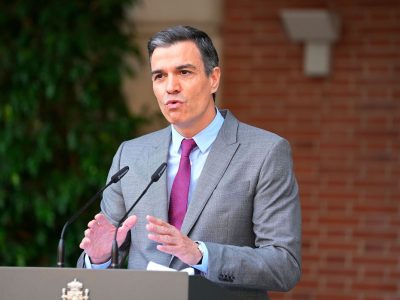 In order to circumvent its inescapable legal effects, the reprisals were no longer classified as war crimes or police abuses, and the anachronistic expression of “forced disappearances” was adopted as “crimes against humanity”, in fact, a “figure” (if it can still be described as such today) five decades after the events that were to be judged. At the request of memorialist associations, 114,266 people were included as “disappeared” in the case brought by Baltasar Garzón against the rebel generals in October 2008 in the Spanish National Court4.The memorialist associations subsequently raised this figure to between 130,000 and 140,000 “disappeared” buried in graves, without determining the sources and criteria for this calculation, and without being able to establish the individual circumstances of these “disappearances” in order to verify whether they fitted this new “figure”.
In order to circumvent its inescapable legal effects, the reprisals were no longer classified as war crimes or police abuses, and the anachronistic expression of “forced disappearances” was adopted as “crimes against humanity”, in fact, a “figure” (if it can still be described as such today) five decades after the events that were to be judged. At the request of memorialist associations, 114,266 people were included as “disappeared” in the case brought by Baltasar Garzón against the rebel generals in October 2008 in the Spanish National Court4.The memorialist associations subsequently raised this figure to between 130,000 and 140,000 “disappeared” buried in graves, without determining the sources and criteria for this calculation, and without being able to establish the individual circumstances of these “disappearances” in order to verify whether they fitted this new “figure”.
The 2007 Law of “Historic Memory” was not an operation to “dignify the victims”. It consisted, on the contrary, in the opening of a “General Cause”
In reality, these figures were based on arbitrary estimates in most provinces and regions of Spain. They also included all those who “disappeared” during the war from 17 July 1936 to December 1951, “as a consequence of the direct or indirect action of the so-called ‘Nationalist uprising’ which led to the Spanish Civil War and the post-war period, whose whereabouts are still unknown, either because they disappeared or because, having been executed, it is not known where the bodies are, having been buried in unidentified places”5. To the inaccuracy of the figures, subject to dispute among historians due to the diversity of methods of counting, the heterogeneity and use of unverified sources, and the interest of memorialist associations in estimating them upwards without documentary support, is added the difficulty of establishing the circumstances of these supposed “disappearances” and “executions”, so that it is not even possible to distinguish the reprisals from those killed on the battlefield or by any other indirect casuistry – hunger, illness – or totally unrelated to the conflict.
However, the figure of 114,266 supposed “disappeared” served a clear purpose: that Garzón could hold Franco and his generals responsible for “a systematic extermination plan over a long period of time”6 and for the crime of illegal detention without accounting for their whereabouts and in a context of crimes against humanity. In this way, the 1977 Amnesty Law could be circumvented. Apart from the legal purpose, there was also a publicity purpose. Garzón based his order on another speculation that became particularly famous, and which was spread by the criminal lawyer, not historian, Miguel Ángel Rodríguez Arias. According to him, Spain had the second-highest number of “forced disappearances against humanity” in the world after Pol Pot’s Cambodia. It added up to more than all of Latin America put together. This absurd ranking also included the number of mass graves, which memorialists in Spain estimated at the time at 2,382 and later raised to 3,000. Later, the so-called “stolen babies” of Franco’s regime were included, which were estimated, without the method being known, at 30,000. But the important thing is that, with the dissemination of these false data, the Spanish Civil War and Francoism could now be reinterpreted in terms of genocide or holocaust, which in fact made Spain one of the most brutal nations in the history of the 20th century. Even more so, to put it more absurdly, than any European or Asian nation in the interwar period and the Second World War, or than the countries of those continents plus the American or African continents in the context of the civil and international conflicts that marked the Cold War until 19917.
The figure of 114,266 supposed “disappeared” was used by Garzón to hold Franco and his generals responsible for a “plan of systematic extermination over a long period of time”
These numbers and comparisons, whose sources and methods of computation were carefully concealed from historians and independent journalists, unleashed a sensationalist campaign of rampant victimisation aimed at silencing any rational debate. The memorialist associations (apart from those of ex-combatants, prisoners and reprisals, above all the Recuperación de la Memoria Histórica and the Foro por la Memoria), once again acted as spearheads in this campaign. They were born, at the turn of the century, from the demand for public money for the opening of graves, but also from the demand to repeal the amnesty law, to annul the sentences handed down during Franco’s regime and to eliminate any vestige associated with the Dictatorship. They did so very closely linked first to Izquierda Unida and then to the PSOE, the trade unions and the nationalist parties. These associations brought about the return of one of the propaganda motifs of the Republican side in the Civil War: that of reinterpreting it as a conflict between democrats and fascists, between victims and executioners, between attacked and aggressors. The exaltation of the Republican side (which evaded the involvement of its leaders and middle management in the reprisals against Spaniards belonging to a whole range of parties, including liberals and conservatives, and their associative networks) and Garzón’s veredict set the tone for a kind of backwards “General Cause”, in which the Nationalist side lost its profiles and complexity to become a kind of Absolute Evil comparable to Nazism. The most concrete manifestation of this backwards interpretation was the battle for the removal of statues, street names and symbols that, for memorialist associations, exalted “Francoism”. Especially with the arrival of José Luis Rodríguez Zapatero to power, the movement gained considerable momentum. For these associations, the symbols to be removed went beyond those merely alluding to the leaders of the Nationalist side, and they even requested the removal of historical symbols related to the Monarchy (royal coats of arms), the Catholic Church (especially the crosses remembering the fallen) and public figures from the centre and right-wing parties in an undisguised attempt to hegemonise public space and undermine the basic principle of pluralism explicitly enshrined in articles 1 and 20.3 of the Constitution, which is at the heart of any liberal democracy.
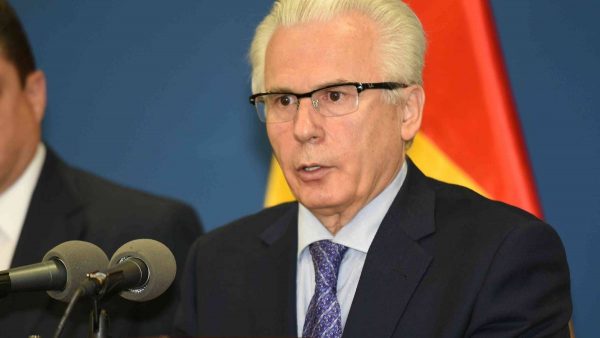
These numbers and comparisons unleashed a sensationalist campaign aimed at silencing any rational debate
All these initiatives were condensed in the so-called Law of “Historic Memory” of 2007. A term that, however, was vetoed by several PSOE experts for its inconsistency and politicisation. The new law allowed for a stable transfer of public resources to the activities of memorialist associations, at least until the victory of the Popular Party, which left them without funding for the 2013 budget. But until that date an office for victims’ assistance was created, the work of university groups and memorialist associations was generously financed to draw up a “map of graves in the State” as a preliminary step to excavation projects, and a commission of experts was convened to draw up a report on the “resignification” of the Valley of the Fallen. In all these actions, little priority was given to the work of location and exhumation. According to the figures of these associations, yet to be audited, 740 graves were excavated and the remains of 9,000 individuals were located between 2000 and 2018, of which 430 graves and 3,500 individuals belong to the period 2007-20128. This indicates that, once the known sites had been excavated and the collective burials in the cemeteries which were not really “mass graves” marked out, the search began to slow down and the forecasts of the bulky map of graves were not confirmed. Moreover, the remains found did not belong exclusively to Republican reprisals, nor even to reprisals in the strict sense of the term, as there were remains of those who died on the battlefield or in other situations which do not fit in with the postulates of memorialists. There are few remains found in ditches, open fields or other places other than cemeteries. There are no data on the circumstances of the death of the individuals found, sometimes not even on the identity of the remains, nor statistics on the excavations carried out without result.
On the other hand, public funds have not been spent intensively on financing exhumations, nor on extending benefits to war widows and orphans (only 1,179 new beneficiaries), to prisoners of the Dictatorship because of their sexual condition (some 104) or to the so-called “children of the war” (2,254), but have been used instead for propaganda political tributes to the Republican side. Some have been carried out under the umbrella of scientific events: conferences, congresses, exhibitions and publications of generally low quality, mostly partisan martyrologies, with public money, which have barely advanced the state of knowledge since 2004. Others have focused on marking supposed “places of memory”, basically in cemeteries, but also installing plaques in honour of militia units, or intensifying acts of pressure on the authorities to remove symbols and signs that memorialists considered to be Francoist.
These associations led to the return of one of the Republican side’s propaganda motifs in the Civil War: the reinterpretation of the war as a conflict between democrats and fascists
Nevermore so than then did these activities show the extent to which the policy of exhumations was part of a broader objective to construct an unscientific account of our past between 1936 and 1978, with a view to completely reversing the historical knowledge accumulated from the early 1960s until the early years of the 21st century. The misnamed “historic memory” began to discourage any complex and rational analysis of the past, in an operation of institutionalised amnesia that sought to impose the motives of the popular-frontist propaganda of the Civil War itself. The latter, presented as an essentialist struggle between “democrats” (the Republicans) and “fascists” (the Nationalists), extended to an interpretation of the post-war period that assimilated the Francoists to the Nazis and their repression of the Republicans to the Jewish holocaust, sought to link present-day democracy to the parties and trade unions of the Popular Front and to undermine the foundations of the legitimacy of the 1978 Constitution. In this way, the memorialists discredited their original transactional model, associated all the parties of the centre and right with Francoism, and also that part of the legal and institutional framework of democracy that these same parties defended in the transition, with special emphasis on the monarchical form.
The 2007 law, complemented by regional laws where they were passed, brought memorialists enormous advantages not only financially but also in terms of visibility in the media. Journalists were keen to reflect sentimental accounts of victimisation. It began to be seen as frowned upon to recall the existence of a Civil War and of reprisals in the Republican zone whose deaths had also gone unsolved and therefore unpunished, and of other victims who were not fully compensated for the seizures and other forms of repression they suffered in the Republican zone. To this must be added the increasingly evident success in replacing numerous symbols and labels, with the express promotion of personalities and institutions linked to the Republican side or, more generally, to Republicanism and the various socialist currents in contemporary Spain. As a result, the structures and membership of memorialist associations, many of them born directly through left-wing and nationalist parties and trade unions, have grown, which has led to a redoubling of their capacity to mobilise and intimidate institutions controlled by parties they consider little or nothing committed to their cause, or to the independent work of historians at the University or the Royal Academy of History.
Public funds have not been spent on financing exhumations but on the media’s political tributes to the Republican side
The arrival of the Popular Party to power after the 2011 elections and the emptying of budget allocations damaged the memorialist network, although it was able to continue its work with the support of the autonomous communities and the city councils of provincial capitals and major cities, especially when in 2015 several of them passed into the hands of left-wing coalitions. With the invaluable help of a wide network of historians sympathetic to the memorialist cause and these funds, they have managed to unify left-wing and nationalist parties, and their associative networks, around the propagandistic narrative of the Civil War as a struggle between democracy and fascism, and have managed to silence all discussion with intimidating labels of “Francoist” and constant recourse to emotive and sentimental victimisation. In this environment, it explains why the Popular Party, Ciudadanos and media outlets whose editorial line is far from responding to these postulates, have given in to intimidation and even assumed the narrative in order to shake off any concomitance with Francoism. It is not surprising that regional, provincial and local administrations governed by the PP accept the postulates and even finance memorialist associations.
The “democratic memory” is an operation of institutionalised amnesia that aims to impose popular-frontist propaganda
The maintenance of the plural vision of our past has been due to a minority and isolated group of historians and journalists, to which some isolated resistance from PP administrations has been added, reinforced from 2018 onwards by the presence of VOX in the institutions. While the opposition to the memorialist narrative has been a minority and the means at its disposal are minimal, it has nevertheless achieved the significant support of a significant part of Spanish society. This resistance to the imposition of its narrative would confirm, for the memorialist lobby, the existence of a “sociological Francoism” which they also consider to be a breeding ground for “neo-fascism”. In reality, the argument is a pretext with which they intend to wrap up a very precise ideological operation: to replace proven historical knowledge – the only one from which a “collective memory” can be drawn in the form of commemoration – with an amnesia that makes people forget the anti-democratic past of the Spanish left before the Transition, and the enormous responsibility of its leaders in the destruction of the constitutional Monarchy and the Second Republic, the unleashing of the Civil War and the demolition of the legal order in the area left in the hands of the Popular Front forces after the uprising of July 1936.
 The promoters of “democratic memory” have constantly expressed their astonishment at the enormous dissemination, through the press or books, of research that contradicts their maxims, and at the first institutional signs of contestation of their account. Added to this has been the fact that the exhumation and transfer of Franco’s remains, one of Pedro Sánchez’s star proposals, failed to broaden the PSOE’s electoral base in the November 2019 elections. They were irritated by the Madrid city council’s removal of the names of the streets dedicated to Francisco Largo Caballero and Indalecio Prieto, and the paralysation in that city of the work of “democratic memory” when the names of several people involved in the bloody repression carried out by the Chekas were found on the plaques in homage to the victims belonging to the Republican side, destined for a memorial in the cemetery of La Almudena. As was to be expected, this memorial only honoured these victims, but not those associated with the Nationalist side. To this must be added, finally, the resistance of other administrations to the removal of symbols and street markings, and the mixed results of many of the court rulings against these measures.
The promoters of “democratic memory” have constantly expressed their astonishment at the enormous dissemination, through the press or books, of research that contradicts their maxims, and at the first institutional signs of contestation of their account. Added to this has been the fact that the exhumation and transfer of Franco’s remains, one of Pedro Sánchez’s star proposals, failed to broaden the PSOE’s electoral base in the November 2019 elections. They were irritated by the Madrid city council’s removal of the names of the streets dedicated to Francisco Largo Caballero and Indalecio Prieto, and the paralysation in that city of the work of “democratic memory” when the names of several people involved in the bloody repression carried out by the Chekas were found on the plaques in homage to the victims belonging to the Republican side, destined for a memorial in the cemetery of La Almudena. As was to be expected, this memorial only honoured these victims, but not those associated with the Nationalist side. To this must be added, finally, the resistance of other administrations to the removal of symbols and street markings, and the mixed results of many of the court rulings against these measures.
The promoters of “democratic memory” have constantly expressed their astonishment at the widespread dissemination of research that contradicts their maxims
It is precisely this that has prompted the PSOE to delay no longer the processing of the new law, which continues along the lines of the previous one, and to add punitive measures against dissenters, in an already undisguised attempt to coercively establish its Manichean account of the past. The draft bill, which was approved by the Council of Ministers on 15 September 2020, aims not only to completely redefine the public space and impose memorialism in education at all levels and even in civil servants’ training courses, but also to dissuade any independent investigation or dissemination of information about the period between 1936 and 1978 by means of complaints and administrative sanctions. These sanctions are likely to be extended to those who, apart from the militant memorialists and their leading historians, deal with the political actions of the leaders of the Republican side before the outbreak of the Civil War.
The draft bill aims to re-signify public space, impose memorialism in education and dissuade researchers with denunciations and sanctions
The latter drastically limits not only the exercise of freedom of expression but also freedom of research and teaching, which are the basic presupposition of any scientific discipline. The latter requires the free participation in a rational discussion of working hypotheses and partial or total theses, so that, from the contrast of evidence and the exchange of arguments, scientific knowledge can be established, purified of unfounded speculations and arbitrary opinions. Of course, this freedom should not even be restricted to historians, since every Spanish citizen has the right to participate in this debate. These basic requirements for the production of scientific knowledge are incompatible with any coercive imposition of a partisan narrative. This explains why “historical memory” needs to undermine history as a science and the freedom to research, publish and discuss the period between 1936 and 1978. And this draft bill provides it with the instruments to achieve this.
Notes
- The term Ley de Memoria Histórica (Law of Historical Memory) has been popularly used to refer to it, although technically speaking it is not correct.
- Proposed Law for the Reform of Law 52/2007, of 26 December, which recognises and extends the rights and establishes measures in favour of those who suffered persecution or violence during the civil war and dictatorship (14 October 2007).
- We have opted to use the historiographically controversial concepts of national and republican to facilitate the reader’s understanding.
- Vid. Juzgado Central de Instrucción nº 005, Diligencias Previas Proc. Abreviado 399/2006, Auto 16-X-2008, pp. 23-24.
- Idem, p. 23.
- Idem, p. 31.
- El Confidencial and El Mundo, 6-XI-2019. ABC, 4-VII-2020
- Carlos García de Andoin, “Políticas de Memoria y Justicia anamnética”, Cuadernos de Nueva Revista, p. 62.
On This Day
No Events
Recommended for you

